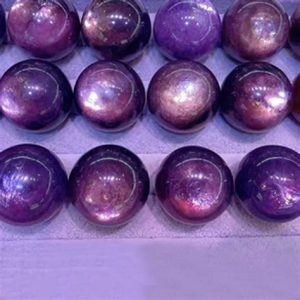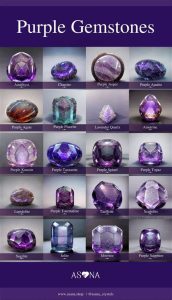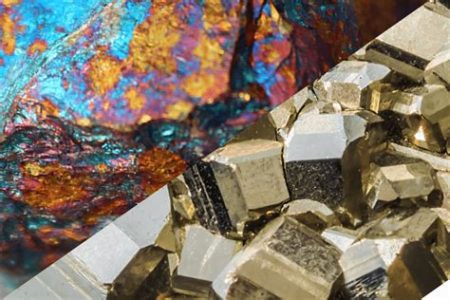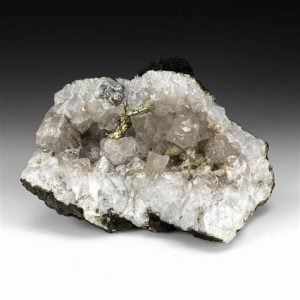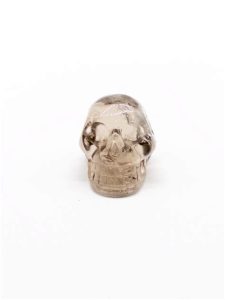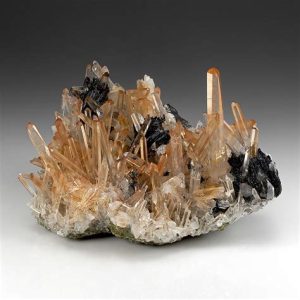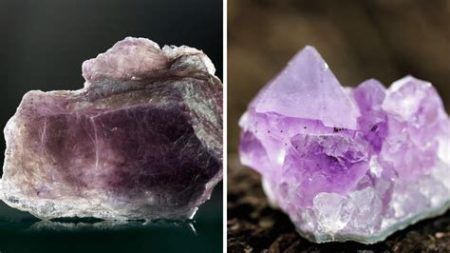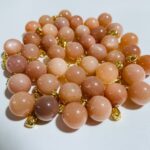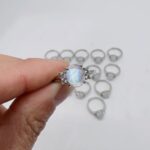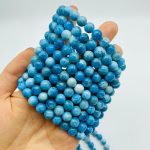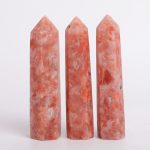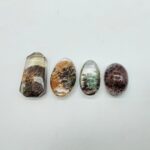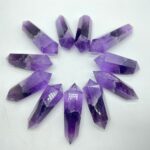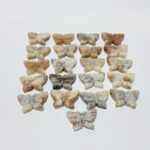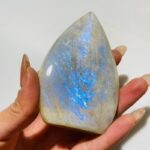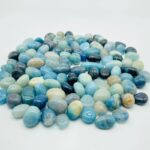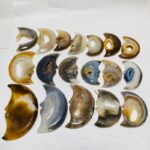Introduction
Nephrite jade, a type of gemstone, is renowned for its distinctive green color and durability. It can be found in both raw and processed forms, each with its own unique characteristics and applications. This article delves into the contrasting properties, uses, and values of raw and processed nephrite jade, highlighting their respective advantages and disadvantages.
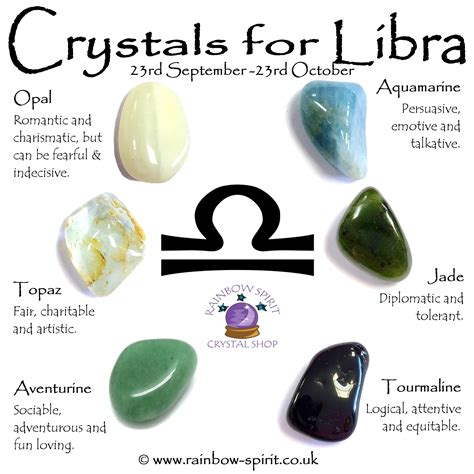
Raw Nephrite Jade
Raw nephrite jade, also known as “natural” or “unprocessed” jade, refers to the gemstone in its original state after being extracted from the earth. It typically retains its rough, unpolished surface and may exhibit natural inclusions, fissures, and variations in color and texture.
Characteristics:
- Crystalline Structure: Raw nephrite jade consists of a compact mass of small, interlocking crystals, giving it a characteristic toughness and durability.
- Color: The natural color of raw nephrite jade can range from pale green to dark emerald green, with variations influenced by mineral impurities and the presence of other elements.
- Texture: The surface of raw nephrite jade is typically rough and uneven, with visible crystals and imperfections adding to its unique character.
- Inclusions: Raw nephrite jade often contains small inclusions or flaws, such as minerals, fractures, or veining, which can affect its overall appearance and quality.
Applications:
Raw nephrite jade is primarily used in its natural state for ornamental purposes, such as in:
- Carvings: Skilled artisans carve intricate figures, sculptures, and ornaments from raw nephrite jade, preserving its natural beauty and textures.
- Jewelry: Raw nephrite jade can be incorporated into jewelry designs to create unique and earthy pieces, often paired with other gemstones or materials.
- Feng Shui: Raw nephrite jade is believed to possess spiritual properties and is often used in feng shui practices to enhance the flow of energy and harmony in a space.
Processed Nephrite Jade
Processed nephrite jade, also known as “polished” or “refined” jade, undergoes various treatments to enhance its appearance and durability. These treatments typically involve cutting, polishing, and heat treatment to remove imperfections and improve the gemstone’s clarity and luster.
Characteristics:
- Polished Surface: Processed nephrite jade has a smooth and polished surface that removes natural imperfections and reveals the gemstone’s vibrant color and clarity.
- Uniform Color: Heat treatment and other processes can enhance the color of processed nephrite jade, resulting in a more consistent and saturated green hue.
- Reduced Inclusions: Polishing and heat treatment can reduce the visibility of inclusions and flaws, creating a more blemish-free and refined appearance.
- Increased Durability: Processed nephrite jade is generally more durable than raw nephrite jade due to the removal of cracks and fractures, making it less susceptible to damage or breakage.
Applications:
Processed nephrite jade is widely used in various applications, including:
- Jewelry: Processed nephrite jade is a popular choice for fine jewelry, where its polished surface and vibrant color make it ideal for rings, pendants, and earrings.
- Carvings: Processed nephrite jade is also used for intricate carvings, but the polishing process enhances the gemstone’s clarity and detail, revealing its beauty and craftsmanship.
- Ornaments and Decor: Polished nephrite jade is incorporated into sculptures, vases, and other decorative objects to add a touch of elegance and refinement to interiors.
Comparisons
Advantages of Raw Nephrite Jade:
- Natural Beauty: Raw nephrite jade showcases the gemstone’s natural characteristics, textures, and variations, offering a unique and earthy aesthetic.
- Spiritual Significance: Raw nephrite jade is believed to possess spiritual properties and is often used in meditation and other spiritual practices to promote balance and harmony.
- Affordable: Raw nephrite jade is generally more affordable than processed nephrite jade, making it accessible to a wider range of consumers.
Advantages of Processed Nephrite Jade:
- Enhanced Appearance: Polishing and heat treatment improve the gemstone’s clarity and color, resulting in a more refined and visually appealing appearance.
- Increased Durability: Processed nephrite jade is more resistant to damage and breakage, making it ideal for jewelry and everyday use.
- Versatile Applications: Its polished surface and enhanced durability make processed nephrite jade suitable for a wider range of applications, including fine jewelry, carvings, and decorative objects.
Value
The value of raw and processed nephrite jade is determined by various factors, including:
- Color: The more vibrant and consistent the green color, the higher the value.
- Clarity: Fewer inclusions and imperfections enhance the value of nephrite jade.
- Carving or Design: Intricate carvings or unique designs can add significant value to nephrite jade objects.
- Size and Weight: Larger and heavier pieces of nephrite jade are generally more valuable.
- Provenance: The origin and history of a nephrite jade piece can also influence its value.
Case Studies
Case Study 1: A Carved Raw Nephrite Jade Pendant
A skilled artisan carved a pendant from raw nephrite jade, preserving its natural texture and inclusions. The pendant’s unique character and earthy aesthetic appealed to a collector who appreciated its raw beauty and spiritual significance.
Case Study 2: A Polished Nephrite Jade Ring
A master jeweler set a polished nephrite jade cabochon in a gold ring. The gemstone’s vibrant green color and smooth surface complemented the golden band, creating a stunning and elegant piece of jewelry.
Benefits and Pain Points
Benefits of Raw Nephrite Jade:
- Aesthetic Appeal: Its natural textures and variations add character and authenticity to jewelry and carvings.
- Spiritual Significance: Practitioners of spirituality value its believed healing properties and calming effects.
- Affordable Option: Its accessibility makes it a suitable choice for those seeking a budget-friendly gemstone.
Pain Points of Raw Nephrite Jade:
- Imperfections: Inclusions and surface flaws can affect its appearance and durability.
- Limited Applications: Its rough texture may limit its usability in certain applications, such as fine jewelry.
- Fragility: Raw nephrite jade is more susceptible to damage or breakage compared to processed jade.
Benefits of Processed Nephrite Jade:
- Enhanced Beauty: Polishing and heat treatment improve its clarity and color, enhancing its visual appeal.
- Durable and Versatile: Its polished surface and increased durability make it suitable for a wide range of applications.
- Prestige and Value: Processed nephrite jade is often associated with luxury and refinement, commanding a higher value in the market.
Pain Points of Processed Nephrite Jade:
- Costly: The processing steps involved in enhancing its appearance increase its cost.
- Altered Nature: The polishing and heat treatment processes may alter the gemstone’s natural characteristics and energy.
- Potential Treatments: Some processed nephrite jade may undergo artificial treatments to enhance its color or clarity, reducing its authenticity.
Step-by-Step Approach
How to Choose Raw or Processed Nephrite Jade:
- Determine Usage: Consider the intended application to determine whether raw or processed nephrite jade is more suitable.
- Inspect Quality: Examine the gemstone’s color, clarity, and surface imperfections to assess its quality and value.
- Consider Budget: Set a budget and compare the prices of raw and processed nephrite jade to find the best option.
- Seek Expert Advice: Consult a gemologist or jeweler for professional guidance and recommendations.
Why it Matters
The choice between raw and processed nephrite jade depends on individual preferences, intended applications, and financial considerations. Raw nephrite jade offers a natural and earthy aesthetic, while processed nephrite jade provides enhanced beauty, durability, and value. Understanding the differences between the two forms empowers consumers to make informed decisions that align with their needs and desires.
Conclusion
Raw and processed nephrite jade, while sharing the same origin, present distinct characteristics and applications. Raw nephrite jade retains its natural beauty and spiritual significance, while processed nephrite jade showcases enhanced appearance, durability, and value. By weighing the advantages and disadvantages of each form, consumers can navigate the complexities of the jade market and choose the gemstone that best suits their needs and aspirations.
Tables
Table 1: Comparative Characteristics of Raw and Processed Nephrite Jade
| Feature | Raw Nephrite Jade | Processed Nephrite Jade |
|---|---|---|
| Surface | Rough and uneven | Smooth and polished |
| Color | Natural variations | Enhanced and consistent |
| Inclusions | Visible | Reduced or removed |
| Durability | Less durable | More durable |
Table 2: Applications of Raw and Processed Nephrite Jade
| Raw Nephrite Jade | Processed Nephrite Jade |
|---|---|
| Carvings | Jewelry |
| Jewelry (earthy aesthetic) | Carvings |
| Feng Shui | Ornaments and decor |
| Spiritual practices | Fine jewelry |
Table 3: Advantages and Disadvantages of Raw and Processed Nephrite Jade
| Feature | Raw Nephrite Jade | Processed Nephrite Jade |
|---|---|---|
| Advantages | Natural beauty | Enhanced appearance |
| Spiritual significance | Increased durability | |
| Affordable | Versatile applications | |
| Disadvantages | Imperfections | Costly |
| Limited applications | Altered nature | |
| Fragility | Potential treatments |
Table 4: Case Studies Comparing Raw and Processed Nephrite Jade
| Case Study | Type | Application | Key Features |
|---|---|---|---|
| Pendant | Raw | Carving | Natural texture and inclusions |
| Ring | Processed | Jewelry | Vibrant color and smooth surface |

